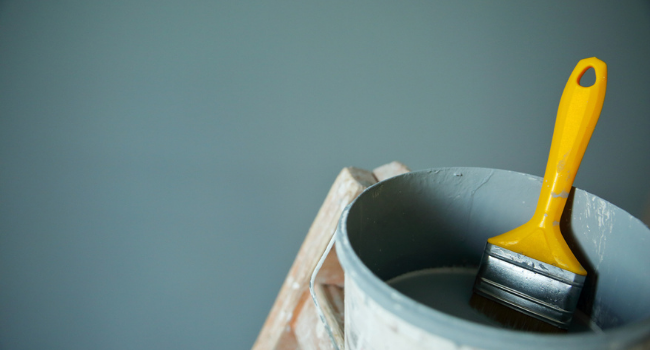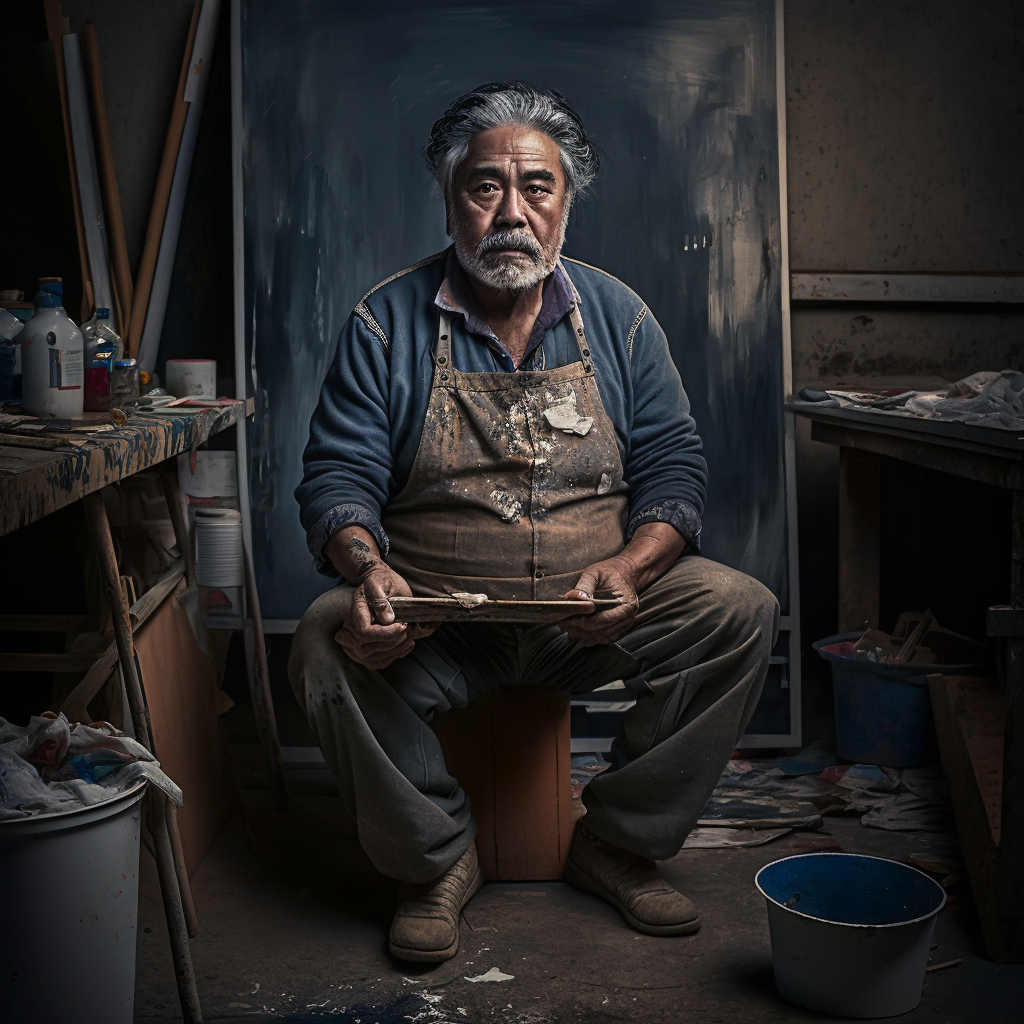Randy Charles is the owner of PaintCentric.com, a website dedicated to providing information, tips, tricks, and news about all things paint. With over 10 years...Read more
Painting can give a new look to any space, like bedrooms. Though, before painting, you must be aware of some safety details. If it’s your bedroom, one of the questions is how long you should wait before sleeping in it.
Chemicals present in the paint can be harmful. So, it’s important to research how long it takes for paint fumes and toxins to evaporate. Don’t underestimate the time needed for the chemicals to disappear, and follow all safety guidelines before letting anyone back into the space.
What Kind of Paint Should You Use?
Paint time! Are you thinking of painting a newly renovated room? It’s important to pick the right paint. Different paints have different drying times and toxicity. Let’s look into the different types of paint: what they can do and how long you need to wait before sleeping in the new room.

Latex Paint
Latex paint is the go-to for interior surfaces. It’s water-based and easy to clean. It dries fast, usually in two hours. Plus, it’s often resistant to dirt and stains—no top coat is needed for walls with mild traffic. But, for doorknobs and trim, a clear sealer or topcoat keeps the color from fading.
When painting a bedroom, allow at least one full day for latex paint to air out before sleeping. This lets the paint smell dissipate. For oil-based products, wait three days.
Oil-Based Paint
Oil-based paint is popular for DIY projects, with many colors and finishes. Each coat takes 4-6 hours to dry and up to 24 hours for full drying. It provides a non-porous, durable finish, but sleeping in painted rooms requires a long wait. Forty-eight hours after the last coat is best, as this lets fumes dissipate.
Safety is important while painting with this type of product, as it has high VOCs and unpleasant odors. Ventilation and gloves/masks should be worn.

Specialty Paints
When it comes to painting a room, there are lots of options. Depending on the goal, specialty paints can give unique textures and resistance. It’s important to know your painting surface, as some paints need certain conditions and drying times.
- An acrylic eggshell finish is a great choice for walls and ceilings with imperfections. The low luster reflects light well and resists stains better than satin or glossy finishes.
- For metal surfaces, alkyd is the best option. Oil-based, it’s easy to apply and offers great corrosion protection. It also dries quickly (2 hours!), so it’s great for touch-ups.
- For high-traffic areas, epoxy coatings are ideal. They resist corrosion and heat/cold and are very durable. However, they’re expensive due to their long drying time (2 days).
- You can also use special effects, like glitter and metallics, on wood surfaces like furniture and cabinets. For the environmentally conscious, low-VOC paint options, use fewer chemicals while performing well.
Latex Paint
Latex paint is the typical choice for interior walls. It is much healthier than oil-based paints. It also dries fast due to paint compounds breaking down water molecules. Waiting at least 24 hours before sleeping in a freshly painted room is advised. This is to make sure the area is safe and healthy.
Remember, moisture will still be present in some areas during this time. This can create dangerous fumes in areas near a bed or where someone may stay for a long period. Different types of latex paint may require more curing time than others. It is best to ask the manufacturer about their product’s drying time before sleeping in the new room.
Oil-Based Paint
Oil-based paints or alkyd paint combos must dry and cure before sleeping in the room. These are known as “drying oils” since they harden when they come in contact with air. This process may take from three days to two weeks.
Product type, environmental conditions, application techniques and paint amount will affect the drying time. To ensure VOCs have gone, it’s best to wait two weeks before sleeping in a room painted with oil-based or alkyd paint. Always follow product instructions for painting projects.
Specialty Paints
Specialty and aerosol paints can be tricky. They are thicker and higher in VOCs and need extra drying time. Check the safety data sheet for the exact amount you’ll need. This can be up to 72 hours!
Keep windows open during application and ventilate the room until completely dry to get the best results.
Tips for Sleeping in a Newly Painted Room

Is the paint done? Great! But don’t rush to sleep in the freshly painted room. Waiting a few days is best. It’ll help the paint cure and air out the room. Here are tips to consider when sleeping in a newly painted room:
Ventilate the Room
For safety, ventilate recently painted rooms. Open windows and doors for fresh air. This aids the drying process and eliminates paint smells. Utilize a fan to increase ventilation. Also, run fans overnight. This will reduce paint fumes and lessen any strong odors.
Use Low-VOC Paint
Low-VOC paints are great for your home! They have little to no VOCs, meaning fewer toxins in the air. Plus, no toxic ingredients mean fewer allergies and health problems. Plus, it’ll dry faster, so you don’t have to wait to sleep in the room after painting. Read the label carefully to make sure you get the right kind!
Wear a Mask
It’s important to understand that there could be VOCs (volatile organic compounds) when you sleep in a newly painted room. Wear a mask to protect yourself from breathing in these chemicals. Make sure to use the right type of mask; surgical masks protect against splashes and fluids, and dust masks and respirators filter out particles.
It’s best to wait two days before sleeping in a new paint job. This time allows any lingering VOCs or fumes to disperse. If you can’t wait, make sure the room is well-ventilated. Open all windows for at least half an hour before bed, and air the room out periodically afterward. Also, check the paint can for any warnings about ventilation. Every painting has different chemistry and drying times, so get the paint manufacturer’s information.
Conclusion
Ultimately, it’s hard to say if sleeping in a freshly painted room is safe. It all depends on the paint and primer used, the room’s well-ventilated, and the lingering smell of paint or primer. The safest option is to wait for 48 hours before sleeping there.
Homeowners can also use no-VOC paints and primers, which release very few Volatile Organic Compounds into the air. Also, open a window while painting and give it enough time to dry before sleeping.
Frequently Asked Questions
How long should I wait before sleeping in a newly painted room?
You should wait at least 24 hours before sleeping in a newly painted room. This will allow the paint to dry and the fumes to dissipate.
Is it safe to sleep in a newly painted room?
It’s best to wait 24 hours before sleeping in a newly painted room to ensure the paint has dried and the fumes have dissipated. If you’re concerned about lingering fumes, open the windows or use a fan to help circulate the air.
How long should I wait before entering a newly painted room?
It’s generally safe to enter a newly painted room after 2-4 hours, but you should wait at least 24 hours before sleeping to ensure the paint has dried and the fumes have dissipated.

Randy Charles is the owner of PaintCentric.com, a website dedicated to providing information, tips, tricks, and news about all things paint. With over 10 years of experience in the painting industry, Randy has become an expert in the field and is passionate about helping others learn more about painting. He has written numerous articles on the subject and is committed to providing accurate and up-to-date information to his readers.
- Latest Posts by Randy Charles
-
How Much Do You Tip Painters? The Ultimate Guide
- -
Can You Paint Over Rust Converter?
- -
Can You Paint Inside When It Is Raining?
- All Posts
